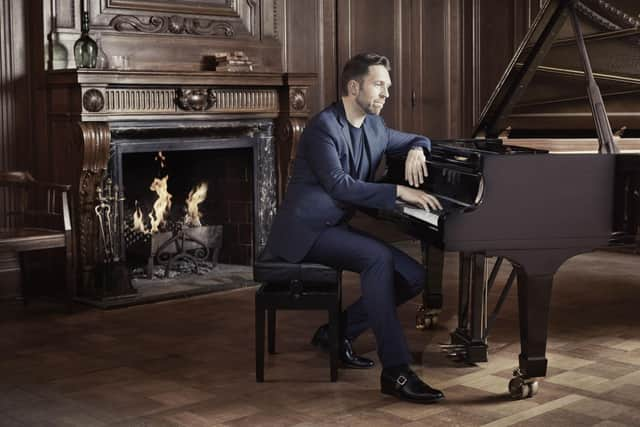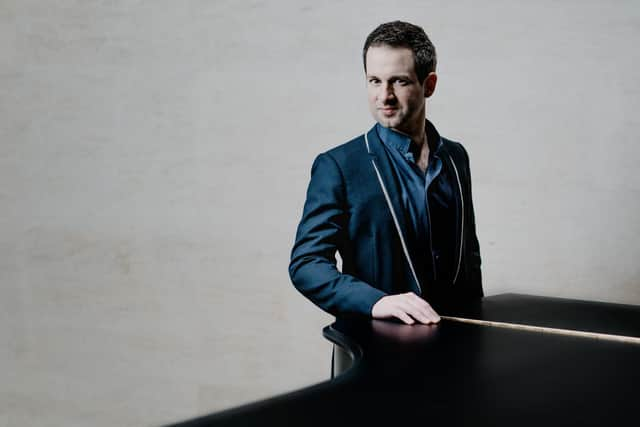Edinburgh International Festival music reviews: Leif Ove Andsnes & Bertrand Chamayou | Oslo Philharmonic – Sibelius & Mahler | Musicians from Simón Bolívar Symphony Orchestra of Venezuela
Leif Ove Andsnes & Bertrand Chamayou *****
Queen’s Hall
For whatever reason – possibly not least the very practical one of having two pianists the calibre of Norwegian Leif Ove Andsnes and Frenchman Bertrand Chamayou in the same place at the same time to rehearse – recitals of piano duets are uncommon.
Friends as well as colleagues, Tuesday morning’s recitalists at the Queen’s Hall had clearly not only rehearsed together but discussed and planned in thoughtful and meaningful detail the shape of their symmetrically constructed programme.
Advertisement
Hide AdAdvertisement
Hide AdIn each half, a selection from Kurtág’s Játékok (“Games”) was the filling of a sandwich with Schubert as the outer layers. Not only are the two pianists at the top of their own game, but they brought the extra spark of human connection that ignites when two or more make music together.
While Schubert oozes flowing lyricism, Kurtág, whether in the two or four hand extracts from his series of pieces for young pianists, is fleeting and playful in the exquisitely crafted, often questioning, miniatures inspired by folk music, chorales and tributes to other composers.
Among many highlights of an exceptional performance, Schubert’s Fantasie in F minor was sublimely beautiful as it built and released tension to close with the elegiac restatement of its main theme. Carol Main


Oslo Philharmonic – Sibelius & Mahler ****
Usher Hall
Heaven and earth and the elemental nature of our existence were the themes underpinning Oslo Philharmonic’s programme which juxtaposed works by the symphonic titans Sibelius and Mahler.
Conductor Klaus Mäkelä and the orchestra unleashed a whirlwind of energy in Sibelius’s action-packed Symphony No 7 in C major. The trombone was the guiding star of this frenzied cosmic showdown between the strings and woodwind which was delivered with a lightness of touch along with meticulous attention to detail. Through-composed, the work explores many musical ideas in a short and concise 20 minutes.


But Mahler is having none of this less-is-more approach. The first movement in his Symphony No 4 (one of his shorter offerings) is the same length as Sibelius’s entire work. The sleigh-bells and flute motif that start the piece and recur throughout, offer a tantalising glimpse of a heavenly paradise. All is not as it seems, however.
A differently tuned violin in the second movement introduces a nostalgic and sinister quality that haunts the symphony. By the third movement, Mäkelä’s relaxed approach had begun to sag, resulting in a loss of momentum and focus until a sparkling fanfare announced the final movement. Soprano Johanna Wallroth gave an eloquent reading of a child’s view of the angels and saints on high complete with details of the feast they would cook up.
Advertisement
Hide AdAdvertisement
Hide AdBut it was Rolf Gupta’s sensational Earth’s Song – Epilogue, which began the concert, that captured the beauty and mystery of our planet in one almighty crescendo. Starting with whispered fragments on the double basses, Mäkelä and the musicians built up a beguiling sound world of rich textural effects from which emerged bird and whale song, rustling trees and pulsing oceans. The orchestra breathed as one creating a timeless, ethereal quality that transported us back to the dawn of civilisation. Susan Nickalls
Musicians from the Simón Bolívar Symphony Orchestra of Venezuela ****
The Hub
Announcing themselves with a series of deep-throated roars and calls, the eight-piece boyband that is the Atalaya percussion ensemble – formed out of Venezuela’s El Sistema Percussion School – proceeded from the rear of the Hub’s newly recreated auditorium. They made their way through the audience to the stage, all beating or shaking something.
Primal and ritualistic one minute, with a completely contrasting delicate duet for claves the next, a huge complexity of rhythms must course through the veins of these young musicians.
Technically, they are simply astonishing. They’ll play two instruments at once, produce animal and bird calls or plinks and plonks to conjure up the natural wonder of rainforest, fire off fugues on marimbas and vibraphone and really listen to each other to respond with improvisation on whichever instrument they might be playing at the time. Their precision, individually and as an ensemble, is phenomenal.
It was less so with the first group from the Simón Bolívar Symphony Orchestra of Venezuela. In need of stronger direction and a bit more confidence, the classical instrumentalists also played music of South America, but without enough tautness in the rhythms which epitomise so much of it. Carol Main